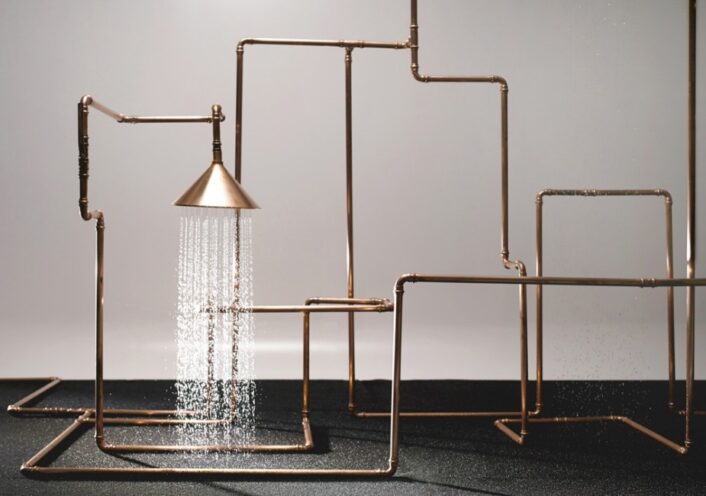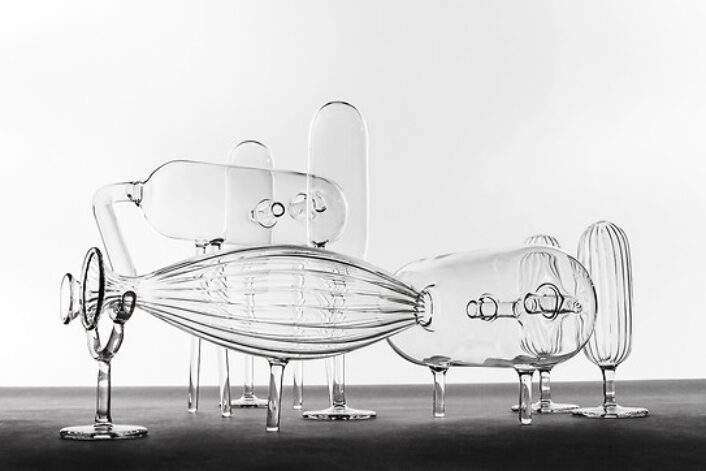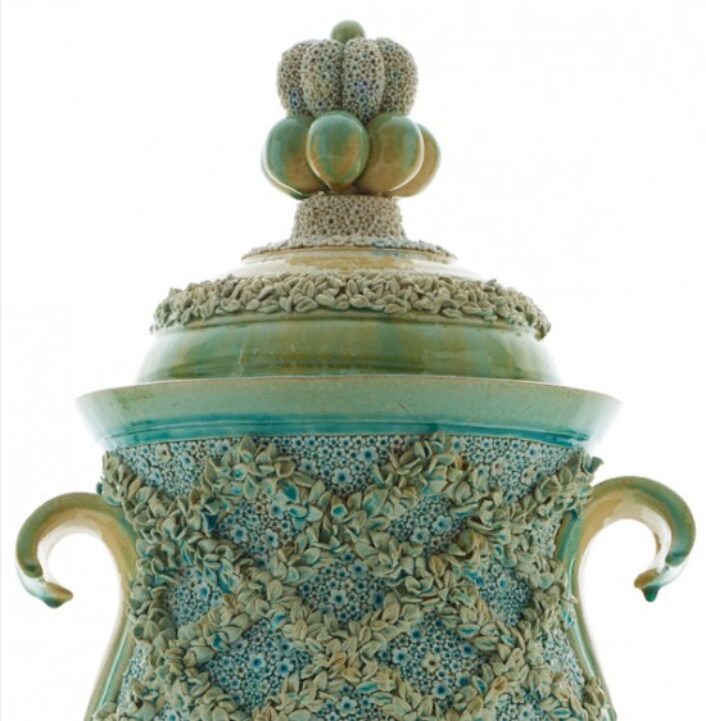Culture
Michele Oka Doner
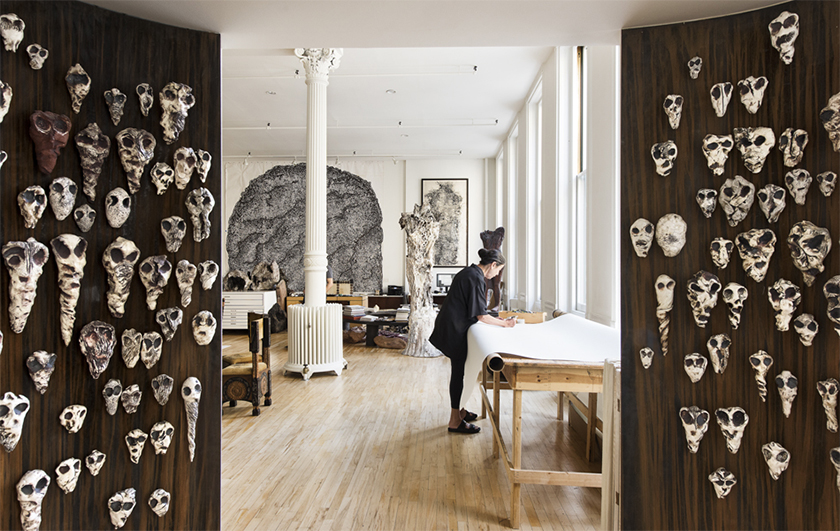
Oka Doner in her Manhattan apartment, standing in front of some finished, some unfinished pieces.
Image courtesy of: 1st Dibs, photographed by: Emily Andrews
Michele Oka Doner is an internationally renowned artist whose work spans five decades. What she does is fueled by a lifelong study and appreciation of the natural world. The fact that she grew up near the beach in Miami probably has a lot to do with this fascination. Although growing up, Oka Doner was equally interested in the shells and coral she collected as she was by dry land’s seed pods and leaves.
Inside her Soho loft, Oka Doner is imprinting the fabric of her work. Rather than walls, Oka Doner’s space is full of conch shells and minerals that separate the kitchen from the lounge. In addition, dried bark and petrified tree roots divide the piano from the dining room.
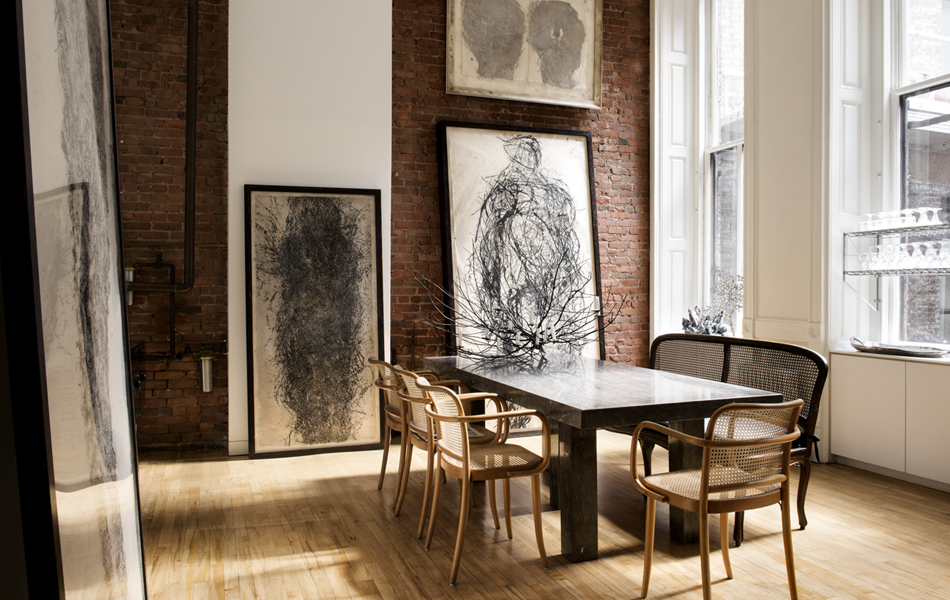
“Shroud” (left), 2009 and “Adam From Roots” (right), 2007.
The 1985 marble table is flanked by cane and bentwood chairs, the 1749 bench with a horsehair seat is a family heirloom.
Image courtesy of: 1st Dibs, photographed by: Emily Andrews
Oka Doner is the way she because of how she grew up… her father was a judge and then a mayor. An accomplished man, it was his interest in the great outdoors that most impressed his daughter. She says (courtesy of 1st Dibs), “As busy as he was, my father would pause to watch a bird sit in a puddle after the rain. He’d stop for a sunset. He paid attention.”
Her mother however, had zero interest in the outdoors and in getting dirty; nevertheless, she was responsible for her daughter’s artistic side. Oka Doner’s grandfather, Samuel Heller painted the MET’s original ceilings and her aunt was an Abstract Expressionist artist who trained under Hans Hoffman and exhibited at some of her era’s most prestigious galleries. What her mother did have was an amazing sense of style. She says (courtesy of 1st Dibs), “She was a minimalist before there was a word for it. Ours was a curated home. That was unusual.” Oka Doner continues to pay homage to one of her mom’s most poignant habits… a devotion to setting the table and arranging flowers, it has always been a ceremonial aspect to enjoying every day.
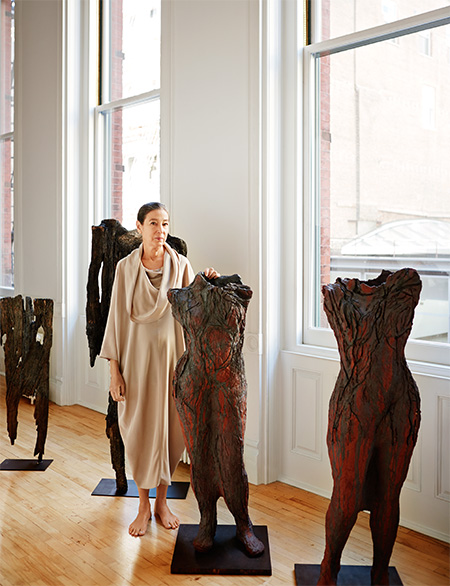
“Distraught Goddness” and “Her Prophecy” are burnt wood effigies.
Image courtesy of: Christie’s, photographed by: Christopher Sturman
Oka Doner is best known for thirty-six public artworks which are on display across the country. Different than the majority of public art, her pieces sit quietly in parks and plazas throughout the United States. Specific pieces are viewed annually by millions of people as they pass through some of the country’s most trafficked locations: the Ronald Reagan Washington National Airport and Miami International Airport.
Two threads that Oka Doner always incorporated into her works come from art history. The first is courtesy of the WPA era of the 1930’s and 40’s when the government paid artists to produce large-scale murals and sculptures. The second thread comes from Europe’s history of incorporating art from the floor to the ceiling, as was traditionally done in cathedrals and palaces.
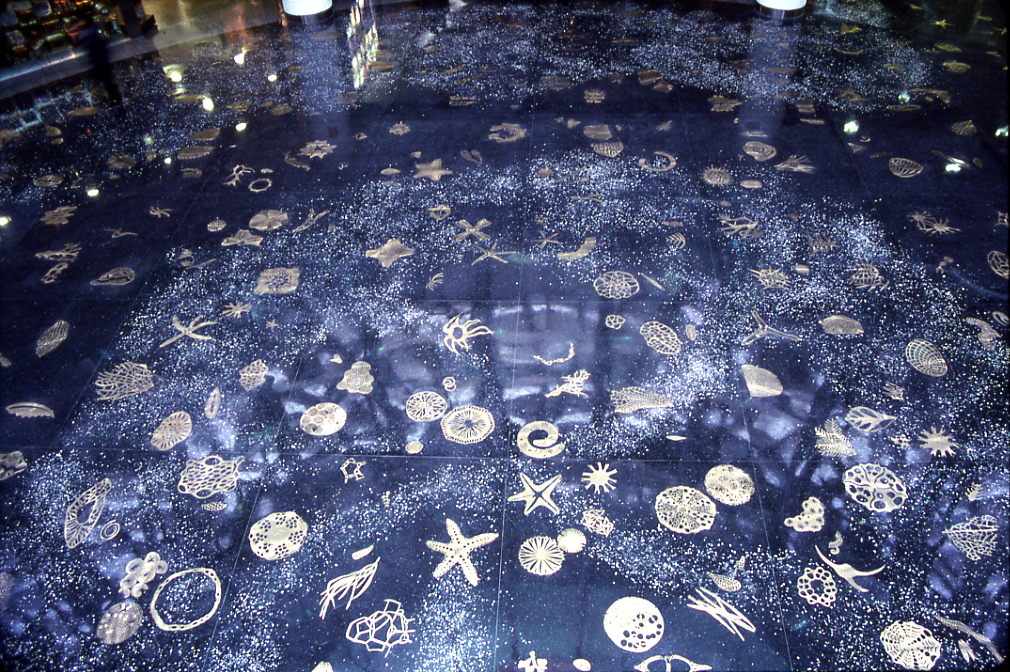
Roughly 9,000 cast bronze and mother-of-pearly elements playfully replicate Miami’s natural environment.
Image courtesy of: College Library F&M
Oka Doner’s most impressive project came out of an invitation to participate in a competition for her hometown’s airport. She won the commission after submitting an eight-foot long proposal, she began working on “A Walk on the Beach” in 1991. The project was not completed until 2010 because the airport was constantly expanding the concourse and she was asked to continue her installation. This project is now the length of a mile and a quarter and is made up of thousands of different bronze sculptures inlaid in a terrazzo floor. Each one is a play on an ocean creature. Initially, inspiration was what was found on the beach; however after a certain number of objects, those pieces became redundant. That is when Oka Doner found inspiration in a photography book that pictured microscopic organisms.
The immense size of the work is one thing, but imagine that she fashioned each wax model herself. She got into a rhythm and a special schedule… mornings were devoted to “Miami” and the afternoons were spent on other projects. She set a fluid goal for herself, shoot for six or seven “Miami” pieces… as she progressed, she got quicker and she got better!
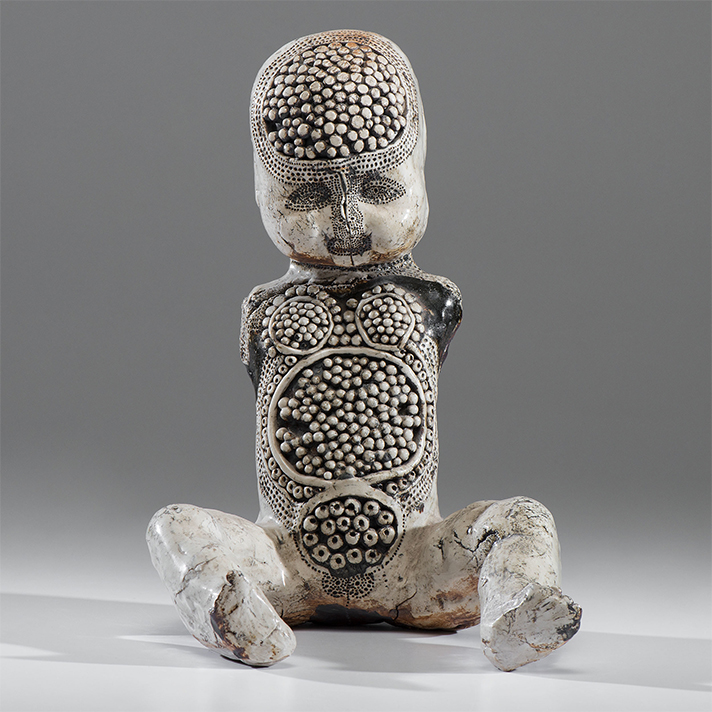
“Tattooed Doll,” 1965, glazed porcelain.
Purchased at a University of Michigan show when the artist was a student at the university.
Image courtesy of: Cowan’s Auctions
Oka Doner is probably best known for her work with cast bronze, she has used it to make everything from sculptures to intricately inlayed floors cast in terrazzo. Looking at her abstract cast bronze sculptures, you see a mixture of living things intertwined in an ethereal way.
Last year, Oka Doner was the New York Botanical Garden’s artist-in-residence. Upon being assigned to the post, the artist promised to “dig in” at the 250-acre landscape in a more liberal way than those who came before her. She said (courtesy of The Art Newspaper), “I want to push the rocks over and see what’s crawling underneath, and how that irrigates the solid and what the soil brings up. I want to find the seed as it’s bursting open- that rotting seed. I like the pink earthworms.”
More than anything, with this project as with everything else, she says, “This is not Dale Chihuly bringing glass sculpture that has a botanical connection in an abstract way. What I’d like to do is create something that has beauty but—as most of the things I hope I do—touch the depth of what it means to be alive.”
